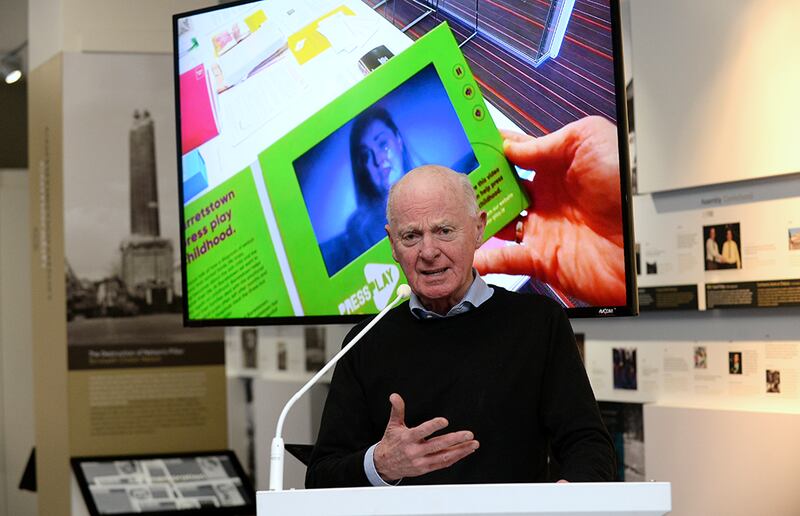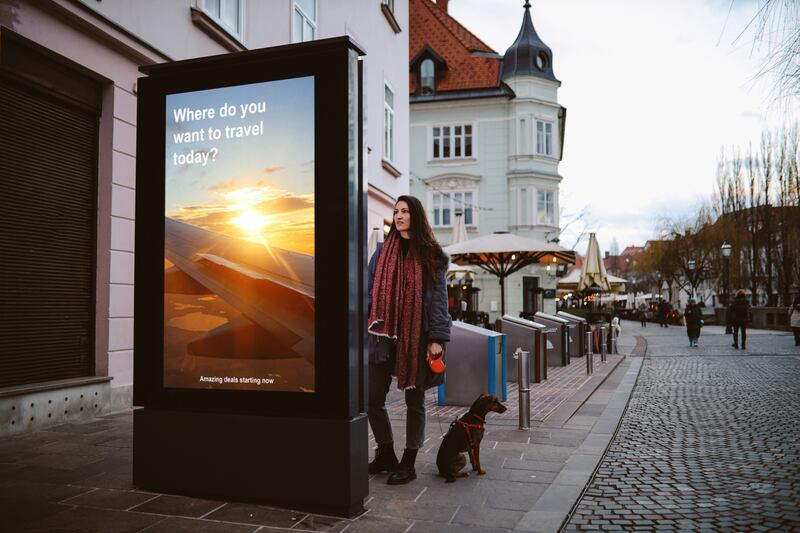What John Fanning knows about the advertising industry right now is that its growing reliance on digital metrics, from eyeballs to page impressions, has come at the expense of long-lasting brand development and creativity.
He traces the problem to the “financialisation of business”, which began in the 1970s with US economist Milton Friedman decrying the notion of corporate social responsibility and claiming a business’s only responsibility was to increase profits for shareholders.
Gordon Gekko’s “greed is good” speech from the 1987 movie Wall Street summed it up perfectly.
“Businesses became 100 per cent focused on maximising shareholder returns, at the expense of building a long-term business, which inevitably means developing a brand,” says Fanning.
READ MORE
Marketing budgets became focused on short term sales promotions, not long-lasting brand building.
Measuring the value of a brand is hard. “But if you create one, you have a very valuable asset for your company,” he says. Just ask Coca-Cola, whose brand is famously its most valuable asset.
But the Friedman doctrine took root. “The share price became everything and, of course, management teams all had share options,” he adds.
Almost by definition, one thing long-lasting brand building won’t do is give your shares a quarterly bounce. Its fate looked sealed and the rise of digital advertising compounded it.

“Digital turbo-charged the financialisation of business,” says Fanning. “They said they could measure everything, even though anyone in the industry will tell you that a lot of the precision they talk about is rubbish.”
He cites a recent article in The Economist, which argues that “for all its aura of precision, the digital ad industry is as murky as ever”.
“The problem is that the managing director understands digital more than they understand ad campaigns,” says Fanning.
But attitudes were about to change again. The financial crisis of 2008 marked a new era in consumer attitudes. “From the day Lehman Brothers filed for bankruptcy on there has been a backlash,” he says.
It reached an acme in 2019 when the Financial Times’s “Capitalism: time for a reset” campaign tagline urged business leaders to accept that business must make a profit but should serve a purpose too.
Earlier this year Larry Fink, boss of investment giant BlackRock, told the business community that it is effective stakeholder capitalism, not a relentless focus on shareholder values, that drives value creation over the long term.

“There are signs that companies are beginning to engage in long-lasting brand building a little more. Although it will take time, there is an opportunity now,” says Fanning. He points to a number of Irish brand building campaigns as examples of what’s possible when it’s done right.
Barry’s Tea, the indigenous brand, has doubled its market share from 20 to 40 per cent over 30 years, “at a time when its main rival has been a multinational with much deeper pockets”, he notes. “It has done this through consistent use of advertising with high production values and well-developed storylines.”
VHI has also done a great job in creating a unique and distinctive ‘brand world’ that has resulted in a valuable property for the business. Three Ireland is another exemplar in Fanning’s book, including its Monster Under the Bed TV ad featuring a young boy and his grandad.
“The basis of a successful campaign is emotional warmth,” he explains. “It’s the same with the Son and Father commercial, where the son asks how the father is, and the father says, ‘Ah sure you know yourself’.” It is, he reckons, classic vernacular copy. “And when you are in the grocery aisle, or buying a phone, or thinking about health insurance those triggers come back to you.”
Brennan’s Bread is another great Irish brand. “It does it brilliantly, with the Dublin accent, the humour, and the yellow and red wrapper, and by consistently advertising ‘today’s bread today’. It is those who consistently advertise and who keep their brand standing out, that win out over time,” says Fanning.

It doesn’t take big budgets. Kilmeaden’s famous tagline ‘the fillet of Cheddar’ is still used on packaging decades after it was introduced in a TV campaign. “How could you calculate how much extra money that line has provided for that brand?” he asks.
Jingles are inexpensive and can be highly effective, because they are memorable.
Any business that wants to build brand value over time should start by talking to Ireland’s creative advertising agencies. But do it soon, because we are fast moving into a new era of consumerism, Fanning suggests.
“We can’t go on simply asking people to spend more and more on consumer goods, because of the environmental price that has to be paid. The job now is to figure out how to maintain present expenditure but reduce consumption. It’s about encouraging people to consume better.”
No algorithm will do that heavy lifting for you. “You’re going to need a grown-up ad agency, because it’s a serious issue that will need explaining,” he says.
Relying on algorithms is easy but building a brand takes faith. “Behind every great advertising campaign is a brave client,” says Fanning, pointing to the work of the late, great copywriter Catherine Donnelly. Nearly three decades ago Donnelly persuaded one client to double the length of a radio ad, telling them: “My campaign needs room to breathe”, Fanning recalls.
The result was the famous Barry’s Tea Christmas Trainset ad, which still airs today.

When it comes to creative advertising, Ireland has two great advantages.
“Brand building is about storytelling, and in Ireland we have a great ability to tell stories going back to a seanachaí tradition, which is long established and deeply rooted,” he says.
“The second is the fact that our most distinctive art form is music, which is a critical element in some of the greatest ads, from Coca-Cola’s Teach the World to Sing to the use of Dusty Springfield on the ESB’s Going Home ad to Bord na Mona’s Marino Waltz.”
Just don’t believe that brand building can be reduced to digitally friendly demographic cohorts. Fanning eschews tags such as Gen X, Gen Z and Alphas altogether. That’s because advertising is not about stalking people across the internet, but about creating desire.
“You are not advertising to a particular group of people who are going to buy your product. You are advertising so that the people who buy your product can have their decision admired by others,” he explains. “How can other people admire the decision to buy your product, if they don’t even know about it?”
Ireland: Where Creative is Native
This IAPI initiative promotes Ireland as a Centre of Excellence for the commercial creativity industry.
In Ireland, being creative is second nature; world-renowned for its writers, artists, poets, musicians and all-round change-makers. These talents spill into the commercial creative world of advertising, design and communications.
IAPI believes there has never been a more opportune for the sector to grow its international reach. For brand owners looking to launch into the European market, Ireland is now a viable and agile alternative, aside from being the only English-speaking country left in the EU.
No longer do brand marketers seek creative expertise abroad as they know they can work with the global best, right here in Ireland. Domestic and International brands such as An Post, AIB, Vodafone, SuperValu, Allianz, Nissan, Lidl, Jameson, Diageo and Toyota and many others are creating world-beating communications using Irish creative and media agencies.
Discover IAPI’s Creative is Native initiative at creativeisnative.com













